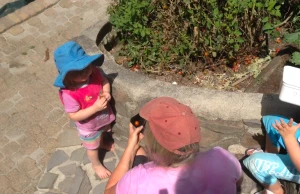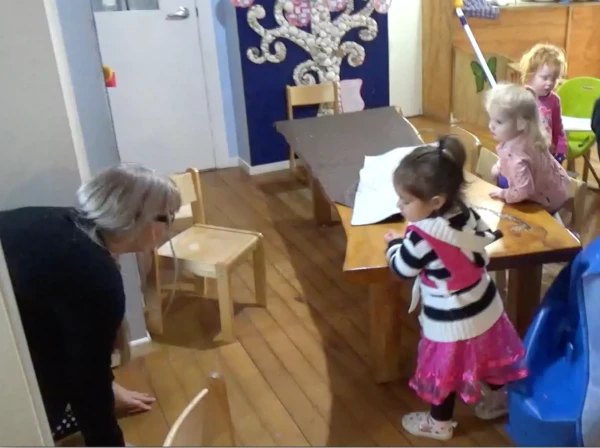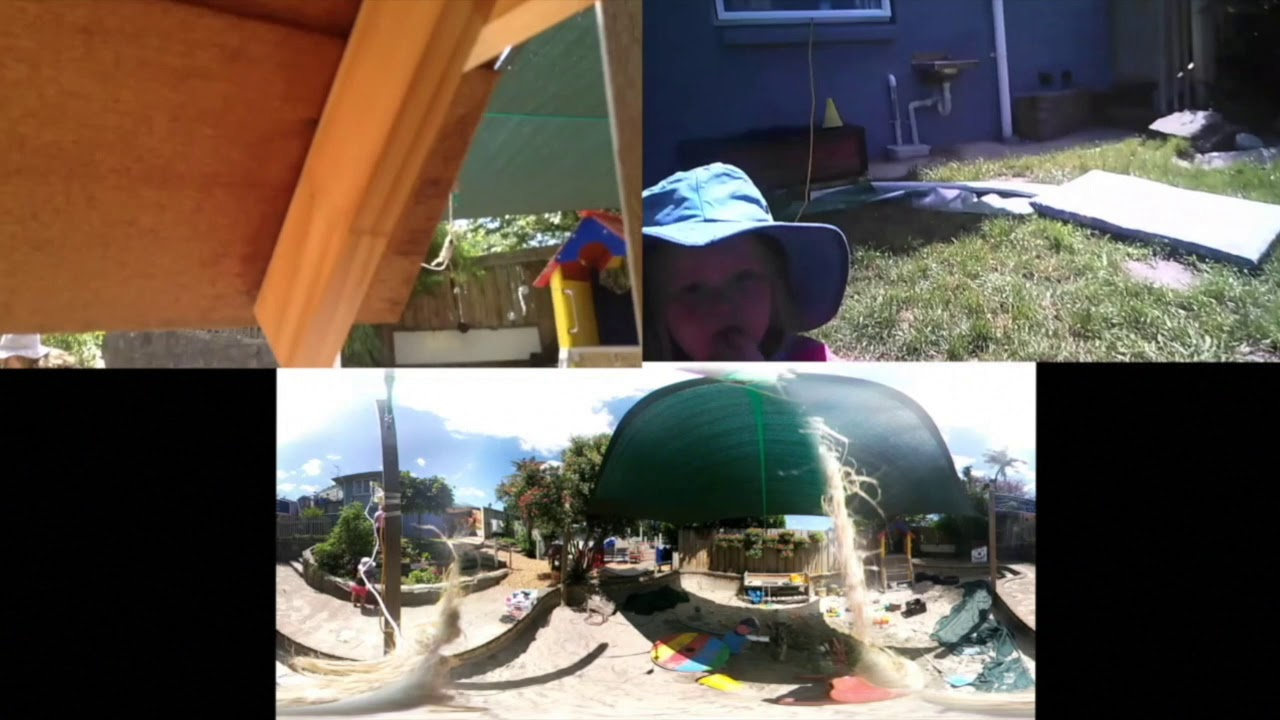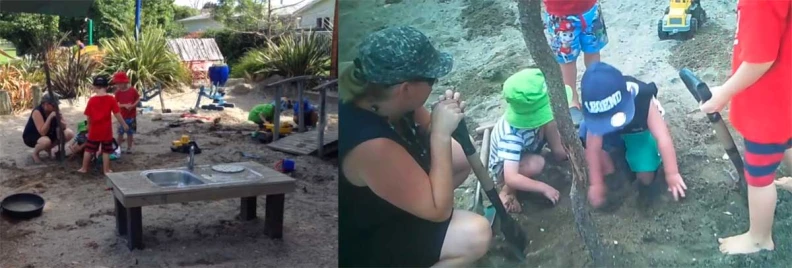What do teachers say and do in dialogues with two year-olds?
The most used orienting strategies teachers' used were narrating or questioning, and instruct, suggest or offer (ISO).
Narrating or questioning called upon teachers' verbal language, whereas instruct, suggest or offer strategies required more nonverbal and verbal language combinations.
With their new knowledge teachers increased their use of demonstrating as an orienting strategy. Correspondingly, they also increased their use of nonverbal and verbal language combinations. When used in tandem with questioning or narrating teachers found their dialogues with two year-olds were much richer as a consequence. They came to see these as a dialogic dance.
Questioning or Narrating
Questioning or narrating were strategies that teachers frequently used with two year-olds. Their greater awareness of the importance of their own nonverbal cues meant that they altered the way they were using questioning as a strategy by including more nonverbal language to demonstrate what was being asked.

Our questions are now more clarifying than instructive - a way of us checking that we have understood two year-old language accurately - like a kind of checking in - rather than seeking an answer. These are now often accompanied by a gesture ... we have completely stopped using strategies like use your words because we now understand that the responsibility is on us to support two year-olds to use all language strategies at their disposal. It is therefore our responsibility to tune into their ways of communicating and supporting them to be heard within the centre culture.
Teacher
"Is there any more on the floor?" asks Caroline as she also nonverbally addresses the question to Te Atamairangi by bending down and placing her hands on the floor.

Using polyphonic video taken from the tracking camera (left), teachers glasses (right) and 360 degree camera (below) watch as Caroline reflects on her dialogue with Katie. She highlights how the project has shifted her understandings of the purposes of questions and the role they play in opening or shutting down the dialogue. For Caroline these new insights were important shifts in her pedagogy:

Instruct, suggest, or offer

Hear Shavaurn discuss some of the instruct, suggest or offer strategies she uses as a teacher.
Recognising the importance of nonverbal language with two year-olds, notice how Shavaurn gives Legend time to respond. Also, pay attention to the tone used by Shavaurn in tandem with the language forms she uses. For example, when she alters the tone of her voice to align with the instruction she is offering "up high [high pitch], down low [low pitch]".
Nonverbal-Verbal Language
We interpreted non-verbal as all bodily movements used to communicate, verbal included words and sounds. Teachers discovered that when they responded to two year-olds using nonverbal and/or nonverbal-verbal combinations their dialogues became richer.
While non-verbal dialogues increased on the part of teachers, they all discovered that verbal language played a vital role in some genre where instruction or guidance was needed (see construction play).
On other occasions they could see the value in using nonverbal-verbal combinations to support fuller engagement by two year-olds in groups, with resources and, especially in supporting them to work effectively with older peers.
We can clearly now see that nonverbal language is of equal, if not more, importance than the verbal. When verbal is used it's often in combination with nonverbal. There are so many more ways we now know that they are using to communicate and we recognise how we had previously privileged the verbal in our pedagogy and even our assessment. We are now using nonverbal-verbal combinations a lot more in our dialogues at the centre. The richness of the dialogue is more now as a consequence.
Teacher
When you step back, watch and wait, you see more from the two year-olds. This has been the biggest shift for us.
Teacher
The Dialogic Dance
Language forms do not belong solely to individuals; they are given life only in the contexts of social encounters as it unfolds between partners in dialogue.
White & Redder, 2017, p. 83
Teachers used an increasing variety of strategies in combination, with two year-olds after their analysis. In the following image, Caroline can be seen drawing upon nonverbal forms of language such as gaze, smile, and watch as she rhythmically sways her body from side to side in response to Zion's gaze and smile, as he draws Caroline's attention to the object in the tree.
This negotiated dialogue towards meaning-making involved considerable problem-solving on Caroline's part but it also involved other people, places and things. She drew on the peer group and also the objects around her to help her orient her engagement in order to give priorities to Zion's priorities for learning.

Most importantly, teachers recognised that their dialogues are like a dance - using different 'steps' each time to choreograph the interaction and orient it towards learning. Listen to Caroline reflect upon the dialogic dance, she explains the sophisticated, complex combinations of language that are used by multiple members of the dialogue to make meaning.
To hear teachers discuss these shifts and their impact on practice see: In what ways did teachers alter their practice to support effective dialogues with two year-olds?